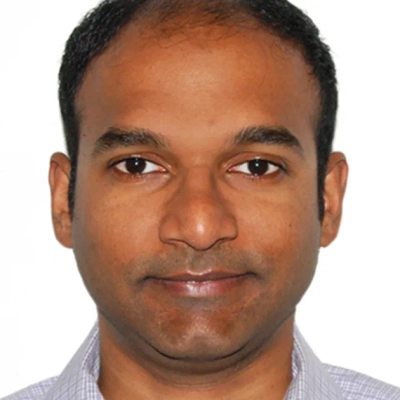6 Continuous Learning Strategies for Software Developers
Diving into the dynamic world of software development, this article unveils proven continuous learning strategies straight from the minds of industry experts. It navigates through the complexities of modern technologies, from automating tech news to mastering data streaming. Readers will gain practical advice for blending structured learning with real-world project experience, ensuring they stay ahead in the ever-evolving tech landscape.
- Automate Tech News with HN Telegram Bot
- Blend Structured Learning with Hands-On Projects
- Master Real-Time Data Streaming with Kafka
- Explore Cloud-Native Development and Kubernetes
- Balance Security and Usability in File Sharing
- Accelerate Growth Through Real-World GitHub Projects
Automate Tech News with HN Telegram Bot
In 2019, I realized I was falling behind. After seven years as a backend developer, I'd fallen asleep at the wheel. I knew my tools and tech stack well enough to get the job done, but stopped looking beyond that. The wake-up call came when I asked myself: What if I had to job hunt today? I was outdated without realizing it and had no idea how to filter the endless river of industry information.
At that moment I committed to staying current with the tech industry, tracking trends, emerging technologies, and meaningful conversations.
My magic solution, Hacker News (HN) Telegram Bot. HN is a news site focused on technology, startups, and programming where the users share links and vote on them. The open-source bot monitors the site and re-sends the most popular posts directly to the group chat. This became my primary information pipeline, giving me a daily overview of relevant tech discussions, interesting projects, and perspectives from professionals I would have never heard from otherwise. When something interests me, I open the link, explore it further or join the conversation in the comments.
These curated links come from all kinds of sources and cover everything ranging from innovative solutions, AI developments, hiring trends, industry challenges, personal reflections, and analyses. This system is bite-sized, automated and easy to implement. One can learn tons of stuff and build enough knowledge to stay current. Now I believe that I can confidently follow most tech conversations and have even become the go-to source for relevant and interesting resources at the office.
But of course reading is just the beginning and practice is needed, so I have actively applied part of this new knowledge in both professional and personal projects. For example:
- I built a language reach visualization map using Svelte after discovering the framework.
- I suggested the integration of some of Llama OCR concepts in a work project.
- Explored Test containers to enhance code testing in our CI/CD flow.
- I have reflected on my coding philosophy and what it takes to be a senior developer and mentor.

Blend Structured Learning with Hands-On Projects
In the ever-evolving field of software development, continuous learning is essential to stay current with new technologies, frameworks, and best practices. My approach to continuous learning is
1. Structured Self-Learning
I prioritize structured learning through courses, tutorials, and documentation from credible platforms. This helps me grasp fundamental concepts, explore new languages, and keep up with industry trends.
Online Courses: I often take courses on platforms like Coursera, Udemy, and Pluralsight, focusing on deepening my knowledge in specific areas such as cloud computing, machine learning, and system architecture.
Reading Documentation & Books: I stay updated with the latest versions of programming languages and frameworks through learning.
2. Hands-On Practice and Projects
While theoretical knowledge is essential, hands-on practice is equally crucial. I apply what I learn through real-world projects to solidify my skills and deepen my understanding.
Side Projects: I regularly build side projects or contribute to open-source repositories on GitHub. This allows me to experiment with different technologies, frameworks, and development methodologies.
3. Community Engagement
Learning from others and sharing knowledge is a critical aspect of growth in the tech community. I actively participate in forums, discussions, and conferences to exchange ideas and gain exposure to diverse perspectives.
Developer Communities: I engage with online communities like Stack Overflow, Reddit, and Dev.to, where I both ask questions and share solutions.
4. Feedback and Peer Review
Feedback from peers and mentors is crucial for growth. I seek code reviews and mentorship to better understand practices, identify areas for improvement, and refine my coding standards.
Currently, I am focused on improving my skills in cloud-native development and DevOps practices. This includes:
Kubernetes & Docker: Learning about containerization and orchestration to deploy scalable, reliable applications in production environments.
CI/CD Pipelines: Implementing continuous integration and continuous deployment pipelines using tools like Jenkins, GitLab CI, and CircleCI to automate the software delivery process.
By enhancing my cloud and DevOps knowledge, I aim to better understand how to build, deploy, and scale applications in cloud environments while ensuring efficient workflows and smooth collaboration between development and operations teams.

Master Real-Time Data Streaming with Kafka
My approach to continuous learning and development as a software developer revolves around hands-on experimentation, deep technical dives, and real-world problem-solving. I prioritize staying ahead of industry trends by integrating new technologies into active projects, contributing to open-source, and leveraging AI-driven learning tools like GitHub Copilot and AWS Skill Builder.
One specific area I'm currently focused on improving is real-time data streaming architectures using Apache Kafka and event-driven microservices. As modern applications demand low-latency, high-throughput processing, mastering Kafka Streams, schema evolution, and distributed fault tolerance is crucial for scalable, event-driven backend systems.
To reinforce learning, I'm implementing Kafka-based architectures in cloud environments like AWS and GCP, optimizing data ingestion, partitioning, and consumer scalability. This practical approach ensures I not only understand theoretical concepts but also solve real-world engineering challenges, keeping me at the forefront of backend distributed systems innovation.

Explore Cloud-Native Development and Kubernetes
I approach continuous learning by dedicating regular time to both research and practical experimentation. I follow industry blogs, attend webinars, and engage with online communities to stay abreast of the latest trends. This mix of theory and hands-on projects not only reinforces new concepts but also allows me to apply innovative ideas directly to my work.
Currently, I'm focused on deepening my expertise in cloud-native development, particularly around container orchestration with Kubernetes. As scalable and resilient architectures become more critical, I'm investing time in mastering best practices and exploring advanced deployment strategies. This ongoing learning not only sharpens my technical skills but also prepares me to tackle complex challenges in dynamic, distributed environments.
Balance Security and Usability in File Sharing
Continuous learning is a big part of staying ahead in technology. Early in my career, I realized that keeping up with new tools and best practices wasn't just about job security--it was about being able to solve problems faster and build better solutions. I make a habit of exploring different approaches when working on a project, listening closely to colleagues during discussions, and paying attention to lessons from code reviews. Every project brings a chance to pick up something new, whether it's a small scripting trick or a better way to structure a system for long-term maintenance.
One area I'm currently improving is secure file sharing. At Parachute, we've seen firsthand how businesses struggle to balance security with ease of use. Too many companies either make things so locked down that employees find workarounds or leave sensitive data exposed without realizing it. I've been testing different tools and processes to help clients find a better middle ground. This includes researching encryption methods, exploring user-friendly authentication solutions, and understanding compliance requirements in industries like healthcare and finance.
For anyone looking to stay current, curiosity is key. Ask questions, dig into discussions, and don't just accept a tool or method at face value--understand why it's being used. Sharing knowledge is just as important as gaining it. The best insights often come from conversations where people challenge each other's assumptions. If you're constantly learning and sharing, you'll not only improve your own skills but also help those around you grow.

Accelerate Growth Through Real-World GitHub Projects
When it comes to continuous learning, I'm a big believer in the power of diving deep into real-world projects. There's no substitute for getting your hands dirty and tackling a challenge head-on. Whether it's building a new app, implementing a new system, or troubleshooting a complex issue, these immersive experiences provide invaluable learning opportunities.
One resource I've found incredibly helpful for this type of learning is GitHub. It's an amazing platform for exploring open-source projects, collaborating with other developers, and learning from real-world code examples. I often find myself digging into the code of interesting projects, studying different approaches to problem-solving, and discovering new techniques and technologies.
This type of hands-on learning has been instrumental in enhancing my career. It's allowed me to stay ahead of the curve, expand my skill set, and develop a deeper understanding of the technologies I work with. By actively engaging with real-world projects and immersing myself in the details, I've been able to accelerate my learning and become a more effective and well-rounded engineer.



